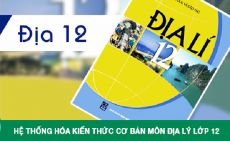Read the following passage and mark the letter A, B, C, or D to indicate the correct answer to each of the questions
LESSONS FROM CURITIBA
Urban planning deals with the physical, economic, and social development of cities. Today urban populations are increasing rapidly, and growing cities are putting enormous pressure on the environment. For this reason, the type of urban planning found in Curitiba, in southern Brazil, is more important than ever.
Curitiba is a fine example of how urban planning can work. This has not always been the case, however. At one time, Curitiba faced the same problems as many other cities all over the world, namely overcrowding, pollution, and an increased demand for services, transport, and housing. How, then, did Curitiba address these problems?
By the 1940s the population of Curitiba had grown to about 150,000 as immigrants from countries such as Japan, Syria, and Lebanon came to work in agriculture and industry. These people needed both housing and transportation. Curitiba's leaders realised that it was not sensible to deal with these problems separately. Consequently, they employed a French planner and architect, Alfred Agache, to find an overall solution.
Agache studied all aspects of the problem. He designed a scheme which gave priority to public services such as sanitation and public transport. At the same time, the scheme included centres which helped both community life and commerce to develop, and reduced traffic congestion. This was the first scheme to address several problems of growing cities at the same time. Unfortunately, some parts of his plan were not completed. The result, as described below, was that his scheme only served Curitiba for another 20 years.
By the 1960s, the population of Curitiba had grown to about 430,000 inhabitants, so the city had to rethink its needs. In order to do this, the mayor put together a team of architects and town planners led by Jaime Lerner. This team produced the Curitiba Master Plan. This consisted of taking Agache's original plan and adding wide, high-speed roads which crossed the smaller streets. Their proposals also included plans to minimise urban growth, reduce city centre traffic, and preserve the city's historic district. It is clear that the Curitiba Master Plan was one of the first attempts to integrate all aspects of city planning.
This integrated approach to urban design was maintained throughout the 1980s as Curitiba's population grew to almost one million inhabitants. Environmental facilities were added, such as a recycling programme for household waste, and parks and 'green' spaces were protected from development. However, good transportation remained central to the planning.
Good transportation still remains a priority, together with the needs for jobs. A growing population needs employment, so business parks and centres have been added to encourage new small businesses. All these changes will continue be the population of Curitiba increases, but its city planners are continually searching for solutions to the problems.
Câu 26 : What aspect of development does urban planning NOT deal with?
Hãy suy nghĩ và trả lời câu hỏi trước khi xem đáp án
Lời giải:
Báo saiDẫn chứng:
Urban planning deals with the physical, economic, and social development of cities.
Câu 27 : How many problems are mentioned in the passage as commonly shared by many cities?
Hãy suy nghĩ và trả lời câu hỏi trước khi xem đáp án
Lời giải:
Báo saiDẫn chứng:
At one time, Curitiba faced the same problems as many other cities all over the world, namely overcrowding, pollution, and an increased demand for services, transport, and housing.
Câu 28 : What was the main cause of the increase in Curitiba's population Delore the 1940s?
Hãy suy nghĩ và trả lời câu hỏi trước khi xem đáp án
Lời giải:
Báo saiDẫn chứng:
By the 1940s the population of Curitiba had grown to about 150,000 as immigrants from countries such as Japan, Syria, and Lebanon came to work in agriculture and industry.
Câu 29 : In what ways was Agache’s approach different?
Hãy suy nghĩ và trả lời câu hỏi trước khi xem đáp án
Lời giải:
Báo saiDẫn chứng:
Agache studied all aspects of the problem. He designed a scheme which gave priority to public services such as sanitation and public transport. At the same time, the scheme included centres which helped both community life and commerce to develop, and reduced traffic congestion. This was the first scheme to address several problems of growing cities at the same time. Unfortunately, some parts of his plan were not completed. The result, as described below, was that his scheme only served Curitiba for another 20 years.
Câu 30 : What did the Curitiba Master Plan do?
Hãy suy nghĩ và trả lời câu hỏi trước khi xem đáp án
Lời giải:
Báo saiDẫn chứng:
This consisted of taking Agache's original plan and adding wide, high-speed roads which crossed the smaller streets. Their proposals also included plans to minimise urban growth, reduce city centre traffic, and preserve the city's historic district. It is clear that the Curitiba Master Plan was one of the first attempts to integrate all aspects of city planning.
This integrated approach to urban design was maintained throughout the 1980s as Curitiba's population grew to almost one million inhabitants. Environmental facilities were added, such as a recycling programme for household waste, and parks and 'green' spaces were protected from development. However, good transportation remained central to the planning.
Đề thi giữa HK2 môn Tiếng Anh 11 năm 2021
Trường THPT Võ Trường Toản











